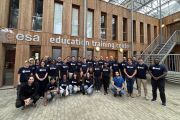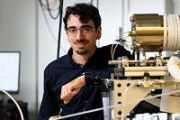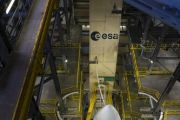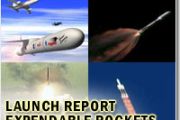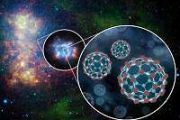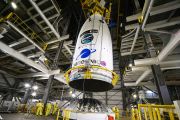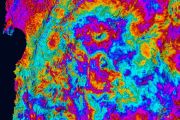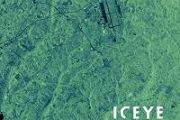
Copernical Team
SpaceX Dragon supply ship launch scrubbed by bad weather
 The launch of a SpaceX Dragon spacecraft to resupply the International Space Station was scrubbed Tuesday afternoon because of bad weather, NASA officials said.
The CRS-26 mission had been set to launch on a new Falcon 9 rocket at 3:54 p.m. EST from Kennedy Space Center in Florida. The attempt was reset to Saturday at 2:20 p.m.
NASA engineers called a halt to the countdown at T-m
The launch of a SpaceX Dragon spacecraft to resupply the International Space Station was scrubbed Tuesday afternoon because of bad weather, NASA officials said.
The CRS-26 mission had been set to launch on a new Falcon 9 rocket at 3:54 p.m. EST from Kennedy Space Center in Florida. The attempt was reset to Saturday at 2:20 p.m.
NASA engineers called a halt to the countdown at T-m Advanced Space leads first ever commercial mission to operate at the moon
 Advanced Space LLC., a leading space tech solutions company, is the first commercial entity to own an operational satellite at the Moon. CAPSTONE, the Cislunar Autonomous Positioning System Technology Operations and Navigation Experiment, has finalized its insertion into a Near Rectilinear Halo Orbit (NRHO).
Now that history has been made, the small spacecraft is ready to begin operations
Advanced Space LLC., a leading space tech solutions company, is the first commercial entity to own an operational satellite at the Moon. CAPSTONE, the Cislunar Autonomous Positioning System Technology Operations and Navigation Experiment, has finalized its insertion into a Near Rectilinear Halo Orbit (NRHO).
Now that history has been made, the small spacecraft is ready to begin operations An exoplanet atmosphere as never seen before
 The JWST just scored another first: a detailed molecular and chemical portrait of a distant world's skies.
The telescope's array of highly sensitive instruments was trained on the atmosphere of a "hot Saturn"-a planet about as massive as Saturn orbiting a star some 700 light-years away-known as WASP-39 b. While JWST and other space telescopes, including Hubble and Spitzer, previously have
The JWST just scored another first: a detailed molecular and chemical portrait of a distant world's skies.
The telescope's array of highly sensitive instruments was trained on the atmosphere of a "hot Saturn"-a planet about as massive as Saturn orbiting a star some 700 light-years away-known as WASP-39 b. While JWST and other space telescopes, including Hubble and Spitzer, previously have Family portrait
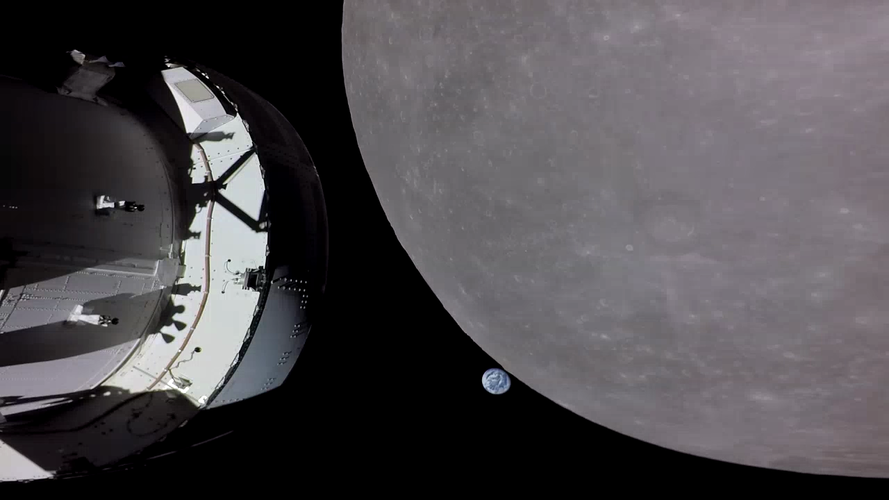 Image:
Image:
The Orion spacecraft with European Service Module (left), Earth (middle) and the Moon (right) are captured in this ‘family portrait’ by Orion’s solar array camera during the spacecraft’s closet approach to the lunar surface.
Six days into the 25-day Artemis I mission, the Orion spacecraft performed a key manoeuvre: just a little more than 130 km from the lunar surface, the main engine on the European Service Module – a repurposed Space Shuttle engine that is now on its 20th spaceflight – fired for just under 150 seconds to push the spacecraft and head towards a lunar orbit using
France, Germany, Italy agree on next-generation space rockets

France, Germany and Italy, the three biggest contributors to the European Space Agency, said Tuesday they have agreed to guarantee the future of the next-generation Ariane 6 and Vega-C rocket launcher systems.
The countries also reaffirmed a preference for European rockets, after the agency was forced to turn to US firm SpaceX to launch two future scientific missions.
The ministers in charge of space for the ESA's 22 member states are meeting in Paris on Tuesday and Wednesday to determine the agency's funding for the next three years, with a 3.2-billion-euro ($3.3-billion) plan for European space launchers high on the agenda.
"The public funding necessary to equilibrate the Ariane 6 and Vega-C institutional and commercial exploitation will be reviewed in order to take into account the evolution of market prices, institutional prices, economic conditions," said a joint ministerial statement from France's Bruno Le Maire, Germany's Robert Habeck and Italy's Adolfo Urso.
The ESA has had to scramble to find a way to get its missions into space after Russia withdrew its Soyuz rockets in response to European sanctions over Moscow's war in Ukraine earlier this year.
ESA Council Meeting at Ministerial Level - Opening and Statements
 Video:
02:14:29
Video:
02:14:29
It is time for critical decisions about space in Europe. For two days on 22 and 23 November, ESA Member States, Associate States and Cooperating States observers are gathering in Paris to discuss how to strengthen Europe’s space sector for the benefit of all - including climate change monitoring and mitigation, secure communications under European control and rapid and resilient crisis response.
Watch live: ESA announces new European astronauts
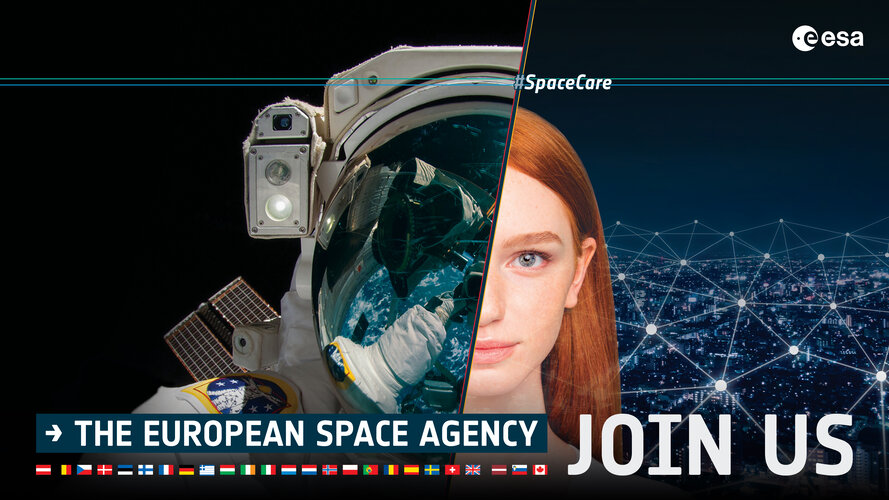
Join us live as ESA unveils the names and faces of the new class of European astronauts. ESA WebTV will broadcast the event at 14:20 CET (13:20 GMT) on Wednesday, 23 November 2022.
"Polluted" white dwarfs show that stars and planets grow together
 Observations and simulations of 237 white dwarfs strengthen the evidence that planets and stars rapidly form together and become planetary systems. An international team of astronomers and planetary scientists, including Tim Lichtenberg of the University of Groningen's Kapteyn Institute, published their findings on Monday in Nature Astronomy.
Planets form in a disk of hydrogen, helium and
Observations and simulations of 237 white dwarfs strengthen the evidence that planets and stars rapidly form together and become planetary systems. An international team of astronomers and planetary scientists, including Tim Lichtenberg of the University of Groningen's Kapteyn Institute, published their findings on Monday in Nature Astronomy.
Planets form in a disk of hydrogen, helium and WALLABY builds an intergalactic map in the outback
 Published in the Publications of the Astronomical Society of Australia, the WALLABY (The Widefield ASKAP L-band Legacy All-sky Blind surveY) Pilot Survey will be sharing its first data release with the scientific community, helping us to better understand nearby galaxies and galactic clusters.
Hundreds of galaxies have been surveyed in Phase 1 of WALLABY, covering 180 square degrees of the
Published in the Publications of the Astronomical Society of Australia, the WALLABY (The Widefield ASKAP L-band Legacy All-sky Blind surveY) Pilot Survey will be sharing its first data release with the scientific community, helping us to better understand nearby galaxies and galactic clusters.
Hundreds of galaxies have been surveyed in Phase 1 of WALLABY, covering 180 square degrees of the AFRL breaks ground on new Fortress Space Lab
 The Air Force Research Laboratory, or AFRL, held a ground-breaking ceremony, Nov. 16, 2022, beginning construction on the Facility for Radiation Tolerance Research on Electronics for Space and Strategic Systems, or FORTRESS, a 6,200-square-foot, $4.5 million facility, located adjacent to the AFRL Space Vehicles Directorate Deployable Structures Laboratory.
The facility is designed to enabl
The Air Force Research Laboratory, or AFRL, held a ground-breaking ceremony, Nov. 16, 2022, beginning construction on the Facility for Radiation Tolerance Research on Electronics for Space and Strategic Systems, or FORTRESS, a 6,200-square-foot, $4.5 million facility, located adjacent to the AFRL Space Vehicles Directorate Deployable Structures Laboratory.
The facility is designed to enabl 

